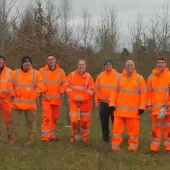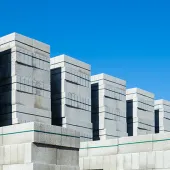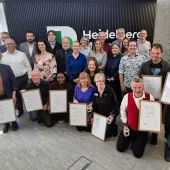
Herd of cows drafted in to help encourage biodiversity in latest stage of restoration work
CEMEX’s Willington Quarry, near Egginton, in Derbyshire, has welcomed some new members to the team – around 50 cows.
These new additions are the latest stage of the restoration work that is taking place at the site. The cattle will perform a valuable role, providing low-intensity grazing that is better for wildlife and reduces the need for mechanical mowing and the use of weedkiller.
Using cattle for grazing helps to encourage biodiversity in restored land and it is hoped that over time it will help to improve the habitat available in the restored areas of Willington. This area covers three worked out gravel pits, which are now native grassland.
Long term, the restoration of Willington will produce an impressive wetland location with ponds, fen, and wet grassland, along with vital wet woodland that rare species such as the willow tit depend on, complementing the Derbyshire Wildlife Trust’s site which sits alongside the quarry.
The restoration of the company’s quarries is a vital part of CEMEX’s environmental efforts, as part of their Future in Action sustainability strategy. In the UK, the company works closely with the RSPB to ensure Biodiversity Management Plans are in place at its quarries. To date, CEMEX have restored more than 1,000ha of priority habitat across the UK.
Bill Newton, quarry manager at Willington, said: ‘It’s important that when our work is finished at the quarry, the land is restored to a high standard so it can be an asset to the local community and a home for many diverse species of wildlife.
‘We’ve been keen to introduce cattle to the site for some time and I’m very happy that they have now arrived. We’re excited to see how they can positively impact the biodiversity of the restored areas and the habitat available – and they certainly help make the landscape even more picturesque.’









